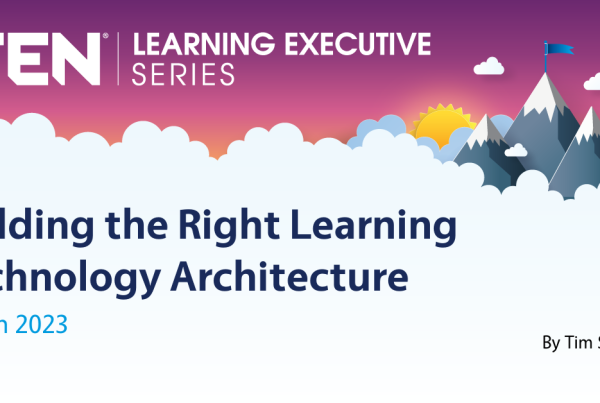
Learning and development (L&D) has the potential to significantly contribute to your organization’s results. What steps are you taking to maximize your impact? Here are four for your consideration.
First, know your organization’s goals and be sure you are doing everything possible to support the CEO’s highest-priority goals. This sounds so simple and yet many L&D functions do not do this. To be clear, we are not talking about HR goals, we are talking about your organization’s “real” goals, like increasing revenue, reducing operating cost or improving productivity. Now, if your CEO’s top five goals include improving leadership, increasing retention or boosting employee engagement, then by all means focus on these as well.
If you are not currently supporting these “real” goals, what programs could you design that would help achieve them? If you are supporting them, are there any new programs which might do an even better job? As a self-check, what percentage of your total L&D spend is for learning directly aligned to your organization’s top five goals? Most CEOs would want you to do everything you can to help achieve their top goals.
Second, speak the language of business. Senior leaders should not have to learn our language; we need to learn theirs. After all, we exist to support them; they do not exist to support us. So, no talking about competencies and competency models unless they bring it up. No talking about level 1 or level 2. Do not use the words “pedagogy” or “learning modalities.” The language of senior leaders is generally money, results, impact, priorities and trade-offs. (See the 2010 research by Jack Phillips on what CEOs want from L&D where the two highest rated requests are impact and ROI.)
They are busy people and they want you to get to the point. How can learning help them achieve their goals? What impact will it have? How much will it cost? They don’t need a lot of technical detail. Start with big picture and talk in business terms. They will ask for more detail if they need it.
Third, given the focus of senior leaders described above, get agreement upfront on the planned impact of your strategic learning initiatives. If you and senior leaders believe learning could help achieve a goal to increase sales by 10%, how much of a difference might learning make? Here we are talking about a plan for the isolated impact of your learning initiatives on sales. This will be a just a plan and there is no guarantee it will be realized, just like there is no guarantee that sales will go up 10% next year because that is the plan. While planning of this sort may be new to you, it is not new to your senior leaders who have to make plans all the time in a world full of uncertainties.
So, for example, could your learning initiative, properly designed, delivered, and reinforced, be expected to deliver a 2% increase in sales? What would it take from you and from the head of sales for learning to have this impact? You want to be on the same page as senior leaders upfront on planned impact and on roles and responsibilities, and then you need to hold yourselves mutually accountable for delivering results.
Fourth, now that you are speaking the language of business and have a plan to contribute to the organization’s top goals, you need to execute it with discipline. This means you need to generate monthly reports showing progress towards plan or goal. The report should show the plan, year-to-date (YTD) results, and a forecast for how the year is likely to end if no special actions are taken. This report will be used by the program manager and department head to manage the learning initiatives to come as close as possible to achieving the agreed-upon impact.
Each month the report should be used to ask whether you are on plan, and if not, why not and what can be done to get back on plan. Or, you may be on plan but the forecast shows you falling below plan by year end. If so, then you need to discuss why and what steps can be taken to stay on plan. Bottom line, you want to know where you stand each month, and you want to know as soon as possible if it appears plan may not be achieved so you can take some action to get back on plan.
These four steps will help you have the greatest impact possible on the goals that are most important to your CEO. Following them will also make you a much better business partner and increase the likelihood of additional resources.
David Vance is executive director of the Center for Talent Reporting. Email Dave at dvance@centerfortalentreporting.org.








